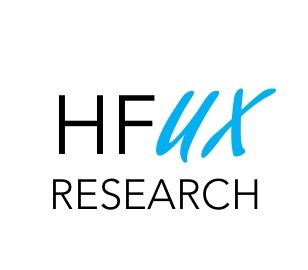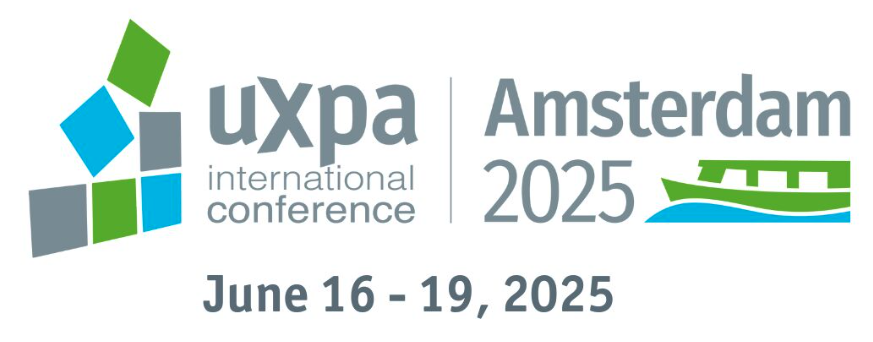Breaking into Medical Human Factors: A Guide for Aspiring Human Factors Engineers
- HFUX Research | Medical HF

- Feb 27
- 7 min read
Updated: Feb 28
Breaking into the Medical Device Industry as a Human Factors Engineer (HFE)
So, you want to break into medical human factors? That’s great — this field needs professionals who care about making healthcare safer and more effective. But let’s be honest: getting your foot in the door can be challenging. Breaking into the medical device industry as a human factors engineer (HFE) can be quite the hill to climb, whether you're shifting from another industry — such as defense, automotive, or tech — or just starting your career. Unlike in other fields, hiring in medical HFE is highly network-driven, and the work itself is heavily regulated. Companies look for candidates who understand the rules, risk management processes, and usability engineering expectations. It’s not just about having usability experience; you need to understand the regulatory requirements, risk management, and usability engineering principles specific to medical devices. To stand out, you’ll need to develop industry-specific knowledge, build hands-on experience, and strategically network with professionals in the field.
If that sounds overwhelming, don’t worry — this guide will walk you through exactly what steps you need to take to make yourself an attractive candidate and land your first job in medical human factors.
1. LEARN THE RULES (Because Medical HF Is Highly Regulated)
Medical human factors isn’t just about making products intuitive; it’s about proving — through rigorous risk analysis, usability studies, and documentation — that a medical device is safe and effective for its intended users.
Hiring managers expect a baseline understanding of key regulations and standards. If you can speak the regulatory language, you’ll immediately stand out.
Essential Regulations and Standards to Study:
U.S. Regulations:
Applying Human Factors and Usability Engineering to Medical Devices (2016). Provides recommendations for integrating human factors into device design and validation to ensure safe and effective use.
Content of Human Factors Information in Medical Device Marketing Submissions (2020). Clarifies expectations for including human factors engineering (HFE) data in FDA submissions.
List of Highest Priority Devices for Human Factors Review (2022). Identifies medical device types that pose the highest risks due to use-related errors and require human factors review.
Safety Considerations for Product Design to Minimize Medication Errors (2016). Provides recommendations for drug and biologic manufacturers to reduce use-related medication errors.
Comparative Analyses and Related Comparative Use Human Factors Studies for a Drug-Device Combination Product Submitted in an ANDA (2023). Details requirements for assessing whether differences between a generic and reference combination product affect usability and safety.
Human Factors Studies and Related Clinical Study Considerations in Combination Product Design and Development (2023). Guidance for integrating human factors studies into combination product development and regulatory submissions.
Safety Considerations for Container Labels and Carton Labeling Design to Minimize Medication Errors (2023). Offers strategies to design safe labeling for pharmaceuticals and biologics.
Safety Considerations for In Vitro Diagnostic (IVD) Devices to Minimize User-Related Risks (2023). Provides recommendations on human factors considerations for IVD device design.
Evaluation and Labeling of Abuse-Deterrent Opioid Medications (2015, Revised 2019). Includes human factors considerations in opioid drug formulation and labeling.
Patient-Focused Drug Development: Selecting, Developing, and Modifying Fit-for-Purpose Clinical Outcome Assessments (2022). Discusses human factors considerations for patient-reported outcome measures.
International Standards & Regulations
ISO 62366-1 – Application of Usability Engineering to Medical Devices
ISO 14971 – Risk Management for Medical Devices
AAMI HE75 – Human Factors Design Best Practices
EU Medical Device Regulation (MDR) & IVDR – MDR (EU) 2017/745
How to Get Up to Speed Quickly:
Start by reading FDA’s Human Factors Guidance — it’s the most cited regulatory document in this space.
Watch webinars from FDA, AAMI, and MedTech Intelligence on human factors regulations.
Read human factors and usability engineering reports (HF/UERs) from past 510(k) submissions to understand how HF data is presented.
PRO Tip: Many people spend thousands of dollars on HF courses before even reading the free guidance docs. Read these first to ensure this field is right for you.
2. GO WHERE THE JOBS ARE: Conferences & Networking
Like it or not, hiring in medical HF is about networking. Many positions never even get posted online because they’re filled through referrals and conference connections. If you want to get hired, you need to meet people who work in this industry.
Best Conferences for Job Seekers:
HFES Healthcare Symposium – The top networking event for medical HF professionals.
AAMI Exchange – Focused on risk management, usability engineering, and regulatory updates.
DIA Global Annual Meeting – Best for those interested in drug-device combination products.
International Symposium on Human Factors & Ergonomics in Healthcare – A great event for learning about global medical HF trends.
Networking Strategy for Conferences:
Join HFES or AAMI early-career groups before attending — these communities are built for networking.
Go to the conference social events — this is where most hiring managers and recruiters hang out.
Follow and engage with HF leaders on LinkedIn before and after the event. Some key people and organizations to follow include HFUX Research, AAMI, MedTech Intelligence, and FDA CDRH Human Factors.
PRO Tip: Conferences can be expensive, but many offer student and early-career discounts. If you can only attend one day, pick the day of the networking social event.
3. GET REAL EXPERIENCE (Without Waiting for the Perfect Job)
If you don’t have prior medical HF experience, a short-term contract job can be an effective way to break in. Many companies hire junior HFEs on contract before offering full-time roles.
Where to Find Entry-Level HF Roles:
HF-Specific Recruiting Agencies
Medical Device & Pharma Companies Hiring Entry-Level HFEs
Medtronic Associate Human Factors Engineer Program
Abbott Early-Career HF Roles
Johnson & Johnson HFE Training Program
CAUTION: Unpaid internships are common but often require university enrollment and don’t always lead to jobs. Look for paid contract roles instead.
4. CHOOSE YOUR FIRST JOB WISELY: Avoid the Consulting Trap
Not all HF jobs are created equal. Many people jump into consulting firms too soon, only to realize they’re overwhelmed by multiple projects and tight deadlines with no structured training.
Why You Should Start with a Manufacturer Instead:
Structured training and mentorship
More time to learn and apply usability engineering principles
Opportunity to work through full product development cycles
Good First Employers:
Medical Device Manufacturers: Medtronic, Boston Scientific, Stryker, Siemens Healthineers
Large Healthcare Companies: GE Healthcare, Philips, Abbott
PRO Tip: Work at a manufacturer first, build a strong foundation, and consider consulting after 2-3 years.
5. BUILD THE RIGHT SKILLS (Not Just Usability Testing)
Medical HF isn’t just about usability testing — it’s about risk management, validation study design, and regulatory documentation.
Key Skills That Will Set You Apart:
Risk & Compliance
Use-Related Risk Analysis (URRA)
Failure Mode Effects Analysis (FMEA)
ISO 14971 (Risk Management for Medical Devices)
Usability & Testing
Formative & Summative Usability Testing
Task Analysis & Workflow Mapping
Writing HFE Reports for FDA submission
Documentation & Regulatory Compliance
Understanding 510(k) and PMA submission processes
Courses & Certifications to Develop These Skills:
AAMI Human Factors & Usability Engineering Course
Medical Device Usability Certificate Programs
MedTech Risk Management Workshops
6. GET INVOLVED IN THE (MEDICAL) HF COMMUNITY (It Pays Off)
Staying engaged in the medical HF community keeps you up to date on industry trends and helps you make connections that can lead to job opportunities.
Ways to Get Involved:
Follow HF industry leaders and companies on LinkedIn.
Join LinkedIn groups like Human Factors in Medical Device Design.
Listen to industry podcasts like Safe and Effective | The Medical Human Factors Podcast.
Mentorship Programs to Check Out:
HFES Mentorship Program
AAMI Early-Career Human Factors Network
Johnson & Johnson Human Factors Mentorship Program

7. BE REALISTIC: This Isn’t Like Academic HF
If you’re expecting cutting-edge UX research every day, you may be disappointed. Medical Human Factors involves repetitive usability studies, detailed risk analyses, and regulatory documentation. It’s not always exciting, but it’s meaningful. At the end of the day, you’re helping make life-saving medical devices safer and more usable. That’s why this field is worth it.
ONE MORE THING...
Breaking into medical human factors takes effort, but if you focus on learning regulations, networking, getting real-world experience, and developing the right skills, you’ll set yourself up for success.
The medical device industry needs skilled human factors professionals, and while the entry process can be challenging, those who are persistent and proactive will find opportunities to grow and make a meaningful impact.
For those committed: put in the work and you’ll find your way in. Stick with it—it’s worth it.
LOOKING FOR A JOB?
If you're a job seeker or newcomer looking to break into medical human factors, make sure to follow our LinkedIn pages HFUX Research and Safe & Effective Podcast for industry insights, career tips, and networking opportunities.
Want Extra Visibility?
Sign up for our HFUX Research newsletter on our website hfuxresearch.com to stay updated on the latest job market trends, regulatory updates, and exclusive career-building content.
Weekly HFUX Job Seeker Spotlight!
Every week, HFUX Research will highlight one job seeker on our LinkedIn page by re-posting their personal post calling for job opportunities. To increase your chances of being featured, write a comprehensive LinkedIn post about:
Who you are - and how you got here
What you’re looking for - and the roles you are aspiring to
Your key skills and experience - don't forget to mention what makes you uniquely you and sets you apart
Why you’d be a great fit for a medical HF team - and what you are most excited to learn and kick ass at
Think of it as your “Hi, it’s me! Look how great I am, and here’s why I’d be a fantastic addition to your team” moment! The more detailed, engaging, and well-structured your post is, the more likely recruiters and hiring managers will take notice — even beyond the weekly feature.
Let’s get you hired and thriving in medical human factors!

#FDA #Science #HumanFactors #HumanCenteredDesign #UserResearch #UserInterface #UserInterfaceDesign #ANDA #UX #MedDev #HumanFactorsEngineering #UXResearch #UXDesign #MedDevice #Usability #MedicalDeviceUsability #CDER #MedTech #Pharma #DrugDeviceCombinationProduct #TaskAnalysis #ComparativeTaskAnalysis #IEC62366 #MDR #AAMIHE75 #HealthcareInnovation #URRA #UseRelatedRiskAnalysis #ResidualRiskAnalysis #HE75 #AAMI #HumanFactorsTesting #HumanFactorsValidation #HumanFactorsSummative #MedicalDeviceDevelopment #UsabilityEngineering #UserExperience #MedicalHumanFactors #HealthcareUX #MedicalDevices #MedicalTechnology #DigitalHealth #FDARegulations #ISOStandards #RiskManagement #RegulatoryCompliance #MedicalDeviceRegulation #HFJobs #MedTechCareers #CareerDevelopment #Networking #BreakingIntoMedTech #Biotech #CombinationProducts #PatientSafety














Comments